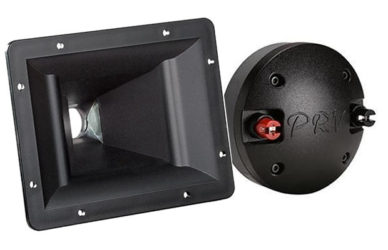| Having tested out two compression drivers with this PH565 horn, I’m still not too happy with the results. In this third attempt, I decided on the PRV D280Ti.
Fig 1 shows the behavior of the D280Ti when loaded with the PH565 BLACK trace = RAW (no crossover, no CDEQ) |
 (Fig 1) Frequency Response of PRV D280Ti with Pyle PH565. Vertical Scale = 5 dB/DIV |
| Fig 2 shows the Dayton RS180S with the D280Ti/PH565 crossed at 2.5kHz (24dB/oct). CDEQ was not activated.
This combination looks promising. |
 (Fig 2) Response of Dayton RS180S with PRV D280Ti/PH565 |
| Improper Summing
The Red trace in Fig 3 shows what the response will look like when the drivers are not time aligned. Due to the large acoustic offset, it resulted in a notch at about 2.2kHz. |
 (Fig 3) Summed Response |
| D280Ti in Reverse Phase
Fig 4 shows the summed response (Red trace) when the Compression driver, D280Ti, is wired in reverse phase. Now, the notch shifted to about 1.8kHz. |
 (Fig 4) Summed response with D280Ti in Reverse Phase |
| Applying Delay
Fig 5 shows the effects of delay added to the RS180S (Red trace). With the correct amount, a deep notch is observed at the crossover frequency. |
 (Fig 5) Delay Added to RS180S |
| Proper Summing with Time Alignment
Fig 6 shows the correct summed response (Red trace) when the D280Ti is re-wired back to normal phase. Of the three compression drivers tested, this PRV D280Ti has the smoothest response. |
 (Fig 6) Time Aligned Summed Response |
